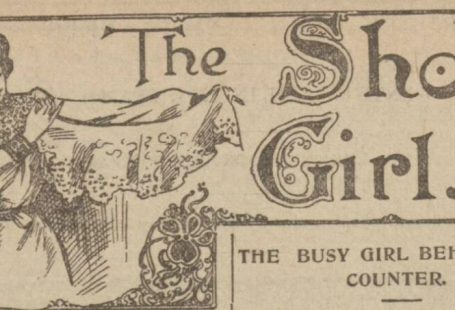The discovery of skeletal remains in a wych elm tree during the April of 1943 remains one of the most compelling mysteries of British crime history. Who was the woman whose remains were found in the wych elm tree? Who was responsible for the perplexing graffiti which began to appear a year after the discovery? Was espionage or witchcraft involved? Using pages from the Archive, we dive into this fascinating story, which, as the Sunday Mirror comments in 1944, is ‘as fantastic as any thriller.’
In April 1943, four boys went birdnesting in Hagley Wood, which is located just outside of Stourbridge in Worcestershire, and lies partway between Birmingham and Kidderminster, when one of them made a shocking discovery.
Birmingham Daily Post | 21 August 1968
The Evening Despatch, 29 March 1943, describes the evidence given at the subsequent inquest.
Robert Hart, of Wollescote, Stourbridge, told the Coroner and jury how at midday on Sunday, 18 April, he and three other lads when birdsnesting in the wood. He left the others and went to the stump of the old elm. Looking in, he saw a skull. He called his friends, and one of them raked the skull out of the tree with a stick, and put it back again. When they got home one of the boys mentioned the find to his father, who telephoned the police.
Professor J M Webster, director of the West Midland Forensic Science Laboratory, was called to the scene. The tree trunk was opened out, and he was able to reconstruct the skeleton. He found no evidence of violence upon any of the bones, however, he did find ‘part of a garment stuffed deep into the cavity of the mouth,’ which might have been the cause of death. He did not ‘imagine anyone getting into the tree voluntarily,’ whilst the skeleton had been there for at least eighteen months.
Birmingham Daily Gazette | 4 October 1949
With murder suspected, the police were keen to establish the identity of the female victim, as well as that of her killer. A probable description of the victim was published by the Hartlepool Northern Daily Mail, 24 April 1943:
Her age is given as between 25 and 40, most probably 35, height 5ft, with light brown hair and dressed in dark blue and mustard coloured striped cardigan and mustard coloured skirt: blue crepe soled shoes, size 5 ½ . All the garments were described as poor quality, and a wedding ring found among the bones was of rolled gold, probably worth 2/6 to-day.
Birmingham Daily Post | 20 August 1968
Despite hundreds of leads being followed by police, her identity was not established. The inquest returned the verdict ‘Murder by some person or persons unknown.’ And then, in 1944, the case took on an even more perplexing twist.
Chalked on the wall of empty premises on Upper Dean Street, Birmingham, were the words ‘Who put Bella down the Wych elm, Hagley Wood?’ The Sunday Mirror reports that another message was chalked previously – ‘Who put Luebella down the wych elm?’ – at Hayden Hill Road, Old Hill, but it was not connected to the case until the second piece of graffiti was found.
According to the Evening Despatch, 30 March 1944, ‘the writing was too high on the wall to have been done by boys, and the police are inclined to the view that it is the work of someone coming into the city early in the morning with farm produce.’
But, like the victim, and her murderer, the identity of the writing’s author was never uncovered. In 1949 the case was reopened upon some fresh evidence coming to light – that of gyspsies having been seen in the area in preceding years.
Birmingham Daily Gazette | 4 October 1949
The link to gypsies is just one of the theories as to why ‘Bella’ ended up dead in the wych elm.
In a series of articles in the Birmingham Daily Post in 1968 Donald McCormick takes an extensive look as to who ‘Bella’ might have been, and what might have happened to her.
It was theorised that she may have been a prostitute, lured by car to the woods where she then met her death. According to McCormick, ‘the police thought it was more probable that she was a refugee from the blitz, for many people fled from Birmingham when the German air raids came and some had been known to shelter in Hagley Wood.’
He also draws the link to witchcraft. Hagley Wood had the reputation for being ‘the haunt of witches’ covens,’ and more compellingly, ‘there was an ancient tradition that the spirit of a dead witch could be imprisoned in the hollow of a tree and thus prevented from wreaking any more harm in the world.’
Birmingham Daily Post | 20 August 1968
McCormick, however, does not seem to put much credence to the motive of witchcraft. He cites a letter received by a Wolverhampton newspaper in 1953, which proclaims ‘the affair is closed and involves no witches, black magic or moonlight rights.’
The writer claims that the victim was a Dutch woman who arrived illegally in England in 1941, and that her killer died insane a year later. McCormick explores the theory that ‘Bella’ was in fact the Dutch girlfriend of German intelligence recruiter Lehrer, who had had a lover in Kidderminster before the war and was fluent in English. German intelligence records tell of an agent, code-named Clara, who was dropped into the area between Birmingham and Kidderminster between March and April 1941. There is nothing to say that she was dropped in Hagley Wood, but she never again made contact with the intelligence agency.
So who did put Bella in the wych elm? Seventy-seven years on from the shocking discovery by the four boys in Hagley Wood, it seems we are no closer to finding the truth. However, the Archive does give us a fascinating glimpse of the theories, and the legends that have trickled down through the decades, of the mysterious lady of Hagley Wood.










